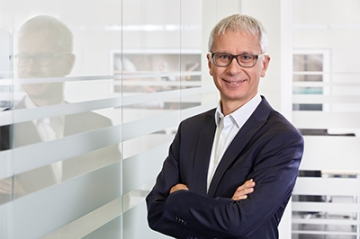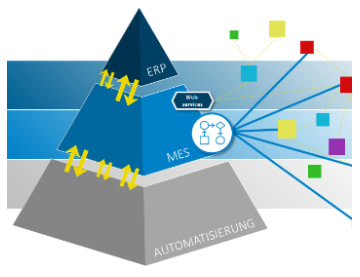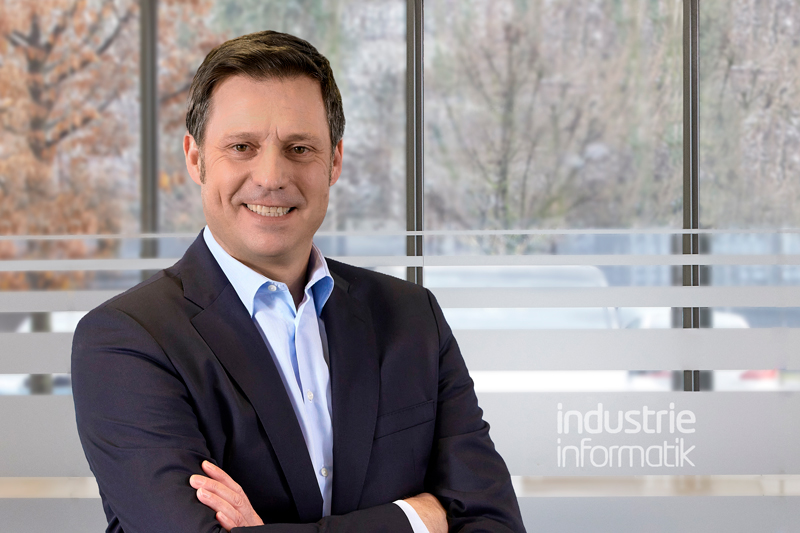Automation pyramid - tried and tested, but still up to date?

For three decades, the classic automation pyramid has served to classify industrial technologies and represent the various, hierarchical levels in industrial manufacturing.
A paradigm shift – fueled by the smart factory and its networked, automated and digital production – is emerging: little by little, the monolithic software systems of the pyramid architecture are giving way to flexible applications, processes and microservices that take into account the individual requirements of a smart factory.
We asked Bernhard Falkner (Chief Technology Officer, Industrie Informatik GmbH) to talk about technological trends in the MES environment.
Mr. Falkner, in 2019 you announced the end of the automation pyramid with the launch of cronetworld. Was this announcement somewhat premature – the message doesn’t seem to have gotten through everywhere in the industry yet?
Correct! Then as now, our clear statement was and is that the automation pyramid as we know it today will gradually dissolve! We were also aware at the time that this process would not be completed by the beginning of 2022. Many industrial companies still rely on this classic and proven model today. This will still be the case in a few years, or there will be hybrid approaches.
Many companies insist on the classic pyramid. Can the two concepts coexist or does hesitation lead to a competitive disadvantage?
The world is driven by a high level of dynamism in almost all areas of life. This naturally also affects industry. Those who want to maintain a competitive edge in the future and keep up with the market must design their processes to be just as dynamic. Classic MES (Manufacturing Execution System) functions can remain at a stable core in this context, provided that they are largely open so that they can be linked to individual processes.
What is driving the change more: Customer demand, or the system manufacturers’ offerings?
Offers from system manufacturers are to a certain percentage based on market and customer needs. So I would argue that both are the case. This is also in line with our experience. We develop new approaches to solutions on the basis of customer inquiries as well as from visions from our think tank. Innovative companies also recognize opportunities for themselves in new technological possibilities. This also gives rise to new needs and requirements for our services and systems!
What do your customers want when they come to you? How does a digitization project proceed for a venerable company that has not yet gained a foothold in this area?
Normally, the focus is on the desire for greater efficiency, optimization potential and future-proof manufacturing. We bring more than 30 years of experience in the field of manufacturing digitization to the table. Companies that approach us are usually happy for us to contribute our experience and thus take them by the hand. Of course, we listen very carefully to identify our customers’ strengths, capture their needs and transform them into concrete benefits for them.
Every software project is different and no two are alike. Flexibility is therefore also crucial in the implementation of projects.
Will OPC UA FX become the “world language of automation” in the future or will it remain with the mix of fieldbuses, Ethernet protocols and new topics like Gaia-X etc.?
OPC UA FX is still very young – a forecast as to whether this approach will become established is therefore hardly possible from today’s perspective. If one compares it with the dissemination history of OPC UA, then it will certainly take several years until there is noticeable market dissemination and penetration. Even then, previous technologies will exist in parallel.
How do you feel about the push by hyperscalers like AWS, which are increasingly active in the manufacturing sector?
Processes and software systems established over several decades, including consulting, process and production expertise, cannot and should not be compared with such solution approaches. However, as an MES provider, we can imagine using components of such hyperscalers integratively as part of large-scale digitization projects and thus maximizing the added value for the industry. From today’s perspective, however, the trust of potential users in these hyperscalers still has to grow. There are also other components, such as legal issues, where there are still many detailed questions to be clarified.






